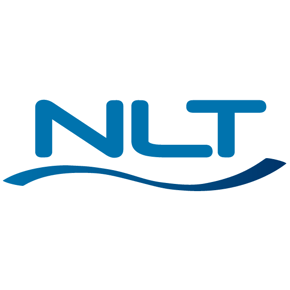Study Overview
This section of our blog focuses on a groundbreaking study that looks into how cities are changing and the effects these changes have on the environment, particularly in terms of heat. Dr. Ran Goldblatt and colleagues have been at the forefront of this research, using satellite images to get a closer look at urban areas in countries like China, India, and the USA.
The main goal of this study was to understand how the shape and layout of cities contribute to urban heat islands – places in cities that are significantly warmer than their rural surroundings. By examining urban areas through satellite imagery, the team could analyze patterns of urban development and their link to increasing temperatures.
This approach is not just about identifying problems. It’s about using technology to pinpoint where we need to make changes in how we build and grow our cities. The findings from this study could help city planners and policymakers make better decisions that keep our cities cooler and more comfortable for everyone.
Key Findings
In July 2022, Dr. Ran Goldblatt and his colleagues shared some eye-opening insights about urban development and its impact on our environment. Their study, using detailed satellite imagery, has highlighted some critical trends in how cities around the world are evolving and the subsequent effects on local climates, specifically regarding surface urban heat islands.
One of the standout discoveries was the trend towards urban homogenization - meaning cities are becoming more and more alike in their layout and form. This shift is significant because it's closely linked to an increase in Surface Urban Heat Island (SUHI) intensity. In simpler terms, as cities grow and change, they're also getting hotter.
This finding is crucial for several reasons. First, it confirms that the way we design and build our cities can directly affect their temperature. Second, it points to a potential global trend in urban development that could be contributing to rising temperatures in urban areas worldwide.
Given the study was published in 2022, it's not just a snapshot of the past but a continuing conversation about how we can use this knowledge to make smarter choices for our urban futures. The insights from this research provide valuable lessons for city planners, policymakers, and communities aiming to create cooler, more sustainable urban environments. To read the full study, visit the publications page.
Implications for Urban Planning
The findings of Dr. Ran Goldblatt and his colleagues' research have significant implications for urban planning and policy choices. As cities continue to grow and evolve, the lessons learned from this study offer a roadmap for mitigating the impact of heat islands and fostering more livable urban environments.
- Understanding the Effects of Urban Homogenization: The study emphasizes the need for diversity in urban design by highlighting the trend towards urban homogenization. Planners and policymakers are encouraged to integrate green spaces, water features, and varied building materials and heights to disrupt the homogeneity that contributes to higher urban temperatures.
- Incorporating Green Infrastructure: The findings underscore the importance of incorporating green infrastructure in urban planning. Parks, green roofs, and tree-lined streets not only enhance the aesthetic appeal of a city but also play a crucial role in cooling urban areas. These natural elements can significantly reduce SUHI intensity by providing shade and facilitating evaporative cooling.
- Adapting Building Codes and Policies: The study's insights into urban form changes and their effects on temperature can inform the adaptation of building codes and policies. By prioritizing energy-efficient designs and materials that reflect rather than absorb heat, cities can counteract the warming effects of urban homogenization.
- Leveraging Technology for Sustainable Urban Development: Finally, the use of satellite imagery in this study highlights the potential of technology in urban planning. Geographic Information Systems (GIS) and remote sensing can provide valuable data for monitoring urban development trends and assessing the effectiveness of heat mitigation strategies over time.
As we look to the future, the implications of this research extend far beyond the academic realm. By informing urban planning practices and policies, the findings offer a pathway to more sustainable, cooler, and more comfortable urban environments for all.
Dr. Goldblatt's Contribution
Dr. Ran Goldblatt, a notable figure at New Light Technologies (NLT), played a crucial role in the groundbreaking study on urban homogenization and its impact on Surface Urban Heat Island (SUHI) intensity. His expertise in remote sensing and urban geography was pivotal in navigating the complex landscape of urban development and environmental change.
- Expertise in Remote Sensing: Dr. Goldblatt's deep understanding of remote sensing technologies was instrumental in the efficient utilization of vast amounts of satellite imagery for examining urban forms across China, India, and the USA..
- Innovative Research Approach: Embracing an innovative research approach, Dr. Goldblatt worked with his colleagues to integrate f advanced geospatial technologies in the study, demonstrating the potential of remote sensing in urban planning and environmental studies.
- Contributions to Urban Geography: Beyond the technical aspects, Dr. Goldblatt's insights into urban geography helped frame the study's findings within the broader context of sustainable urban development.
- Advancing Geospatial Technologies at NLT: At New Light Technologies, Dr. Goldblatt's work exemplifies the company's mission to leverage geospatial technologies for solving complex problems. Through his involvement in this study, he has not only advanced the field of urban geography but also underscored NLT's role in fostering innovation and sustainability in urban planning.
Dr. Goldblatt's contributions to this study reflect his commitment to excellence and innovation. His work serves as a testament to the vital role of geospatial technologies in understanding and addressing the challenges of urbanization and climate change.
About New Light Technologies
New Light Technologies Inc. (NLT) stands at the forefront of the geospatial industry, offering a spectrum of innovative consulting services and cutting-edge technology solutions across diverse sectors. Our mission is to harness the power of integrated geospatial technologies and data analytics to solve some of today's most pressing challenges in urban development, environmental management, and disaster response.
- Innovative Solutions for Complex Problems: At NLT, we believe that every complex problem holds a solution waiting to be discovered. With our robust software platforms, unique tools, and bespoke analytics services, we provide our clients with the intelligence, flexibility, and efficiency needed to make informed decisions and achieve sustainable outcomes.
- A Commitment to Innovation and Excellence: Our dedication to continual research and development ensures that our clients always have access to the latest advancements in technology. From remote sensing and Geographic Information Systems (GIS) to advanced data analytics and cloud-based solutions, our portfolio is designed to meet the evolving needs of government institutions, large corporations, and academic entities.
- Strategic Partnerships for Greater Impact: NLT's strength also lies in our strategic partnerships with industry leaders. These collaborations enhance our ability to deliver comprehensive and scalable solutions, driving innovation and excellence in every project we undertake.
- Empowering Communities with Geospatial Technologies: Beyond providing services, NLT is committed to empowering communities and organizations with the knowledge and tools to leverage geospatial technologies for sustainable development. Through our projects and initiatives, we aim to foster a deeper understanding of the critical role these technologies play in addressing environmental and urban challenges.
To learn more about how NLT is shaping the future of geospatial technologies and contributing to smarter, more resilient communities, visit our website and explore our services and projects.
Join us on our journey to innovate for a better world.

